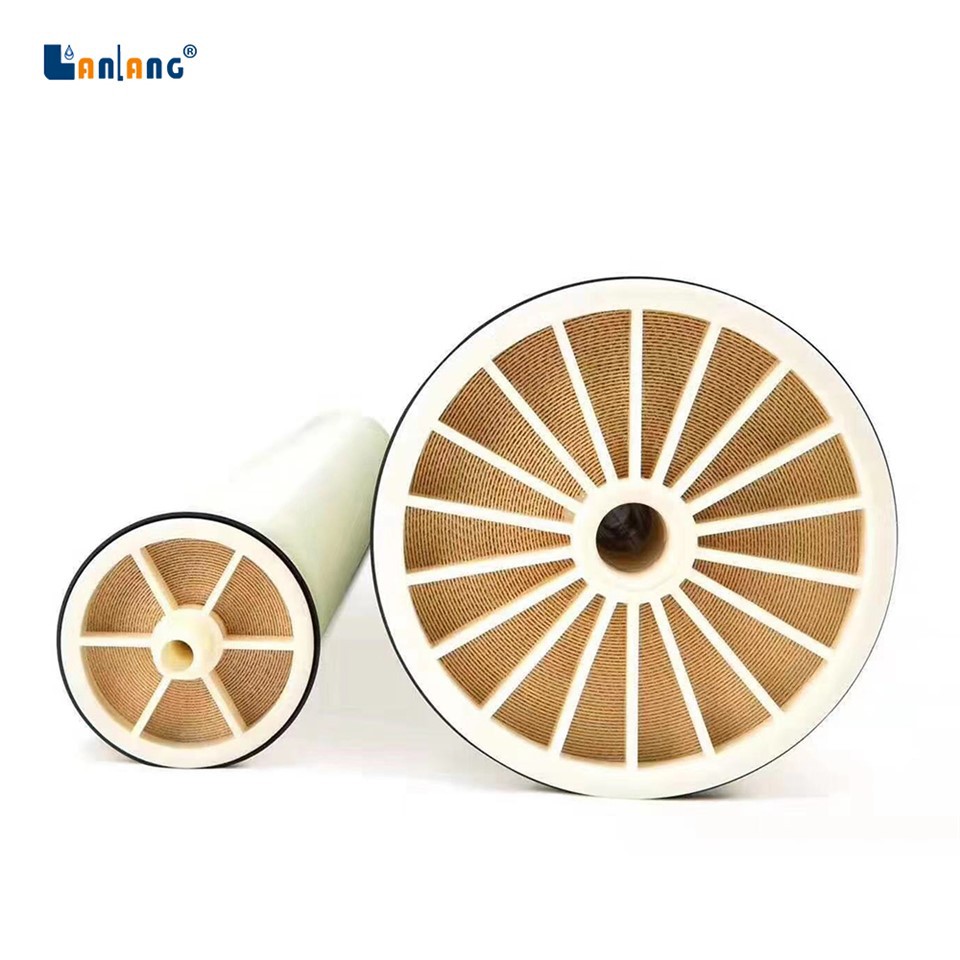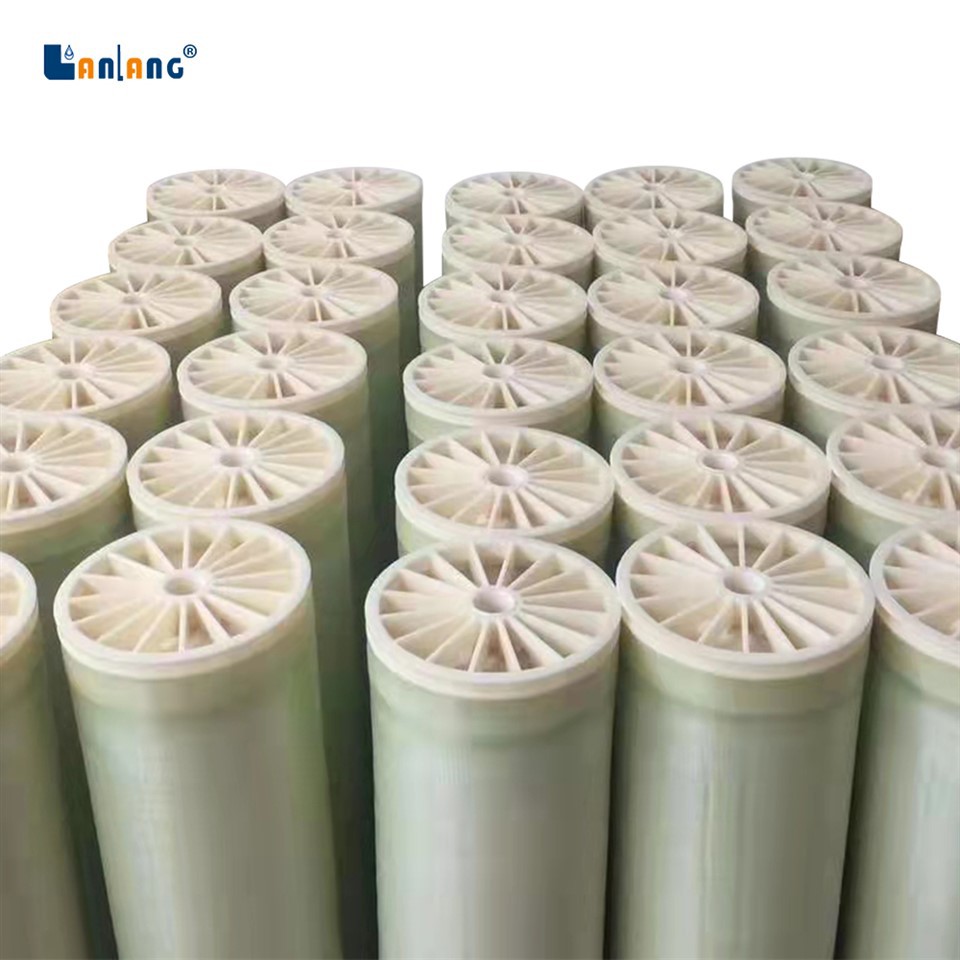The pharmaceutical industry demands the highest quality of water for its operations, as water is a critical ingredient in drug manufacturing, cleaning, and various other processes. Reverse osmosis (RO) membranes play an indispensable role in producing the ultra - pure water required in pharmaceutical applications. As a leading RO membrane supplier, I am well - versed in the significance of RO membranes in this field.
The Basics of RO Membrane Technology
RO is a water purification process that uses a semi - permeable membrane to remove ions, molecules, and larger particles from water. The membrane allows water molecules to pass through while blocking the passage of contaminants. This is achieved by applying pressure to the feed water on one side of the membrane, forcing water molecules to move from a region of high solute concentration to a region of low solute concentration, which is the opposite of the natural osmotic flow.
The key to the effectiveness of RO membranes lies in their unique structure. They are typically made of thin - film composite (TFC) materials, which consist of a very thin polyamide layer supported by a porous polysulfone layer. The polyamide layer is responsible for the separation of contaminants, while the polysulfone layer provides mechanical support. This structure enables the membrane to have high rejection rates for a wide range of contaminants, including salts, bacteria, viruses, and organic compounds.
RO Membrane in Pharmaceutical Water Production
Removal of Inorganic Contaminants
In pharmaceutical water production, the presence of inorganic contaminants such as heavy metals (e.g., lead, mercury, cadmium), salts (e.g., sodium chloride, calcium carbonate), and other dissolved solids can have a significant impact on the quality of the final product. RO membranes are highly effective in removing these contaminants. The small pore size of the membrane, typically in the range of 0.0001 - 0.001 micrometers, allows only water molecules to pass through, while blocking the passage of ions and larger particles.
For example, in the production of parenteral drugs, which are administered directly into the bloodstream, the presence of even trace amounts of heavy metals can be extremely dangerous. RO membranes can reduce the concentration of heavy metals to levels well below the allowable limits set by regulatory agencies such as the United States Pharmacopeia (USP) and the European Pharmacopoeia (EP).


Elimination of Biological Contaminants
Biological contaminants, including bacteria, viruses, and fungi, pose a serious threat to the safety and efficacy of pharmaceutical products. RO membranes act as a physical barrier against these contaminants. The membrane's tight pore structure prevents the passage of microorganisms, effectively reducing the microbial load in the water.
In addition to the physical barrier, the high - pressure environment in the RO process also contributes to the inactivation of some microorganisms. However, it is important to note that RO membranes alone may not completely eliminate all biological contaminants, and additional disinfection steps such as ultraviolet (UV) irradiation or chemical disinfection may be required to ensure the sterility of the water.
Removal of Organic Compounds
Organic compounds such as pesticides, solvents, and pharmaceutical residues can find their way into the water supply. These compounds can have adverse effects on the quality of pharmaceutical products and may also pose health risks to patients. RO membranes are capable of rejecting a wide range of organic compounds based on their size, charge, and hydrophobicity.
The polyamide layer of the RO membrane has a high affinity for certain organic compounds, which can be adsorbed onto the membrane surface and removed from the water. This ability to remove organic contaminants is crucial in pharmaceutical water production, as it helps to ensure the purity and safety of the final product.
Advantages of Using Our RO Membranes in Pharmaceutical Water Production
High Quality and Performance
Our RO Membrane Series is designed to meet the strict requirements of the pharmaceutical industry. Our membranes undergo rigorous quality control procedures to ensure consistent performance and high rejection rates. We use advanced manufacturing techniques to produce membranes with uniform pore sizes and high surface areas, which results in efficient water purification and long - term stability.
Customization
We understand that different pharmaceutical applications may have different water quality requirements. That's why we offer customized RO membrane solutions. Whether you need a membrane with a specific rejection rate for a particular contaminant or a membrane that can operate under specific pressure and temperature conditions, our team of experts can work with you to develop a tailored solution.
Energy Efficiency
Our RO membranes are designed to operate at relatively low pressures, which helps to reduce energy consumption. In the pharmaceutical industry, where large volumes of water are often required, energy efficiency is an important consideration. By using our energy - efficient RO membranes, pharmaceutical manufacturers can lower their operating costs and reduce their environmental impact.
Specific RO Membrane Products for Pharmaceutical Applications
8040 RO Membrane
Our 8040 RO Membrane is a popular choice for large - scale pharmaceutical water production systems. With a large membrane area, this membrane can handle high - flow rates, making it suitable for industrial applications. It offers high rejection rates for a wide range of contaminants, including salts, bacteria, and organic compounds.
The 8040 RO membrane is also known for its durability and long service life. It is designed to withstand the harsh operating conditions in pharmaceutical water production plants, such as high pressures and chemical cleaning. This reliability ensures continuous and stable water purification, which is essential for the uninterrupted production of pharmaceutical products.
RO Membrane for Industrial Machinery
Our RO Membrane for Industrial Machinery is specifically designed for use in industrial machinery used in the pharmaceutical industry, such as water purification systems, autoclaves, and filling machines. These membranes are optimized for the specific requirements of industrial machinery, including high - pressure operation, resistance to chemical cleaning agents, and compatibility with different types of water sources.
Importance of Proper Maintenance and Monitoring
To ensure the optimal performance of RO membranes in pharmaceutical water production, proper maintenance and monitoring are essential. Regular cleaning of the membranes is necessary to remove any accumulated contaminants and prevent fouling. Chemical cleaning agents specifically formulated for RO membranes can be used to restore the membrane's performance.
In addition, continuous monitoring of the water quality parameters, such as conductivity, pH, and microbial count, is crucial. This allows for early detection of any potential problems and enables timely corrective actions to be taken. Our company provides comprehensive technical support and training to help pharmaceutical manufacturers maintain and monitor their RO membrane systems effectively.
Conclusion
RO membranes play a vital role in pharmaceutical water production by removing a wide range of contaminants, including inorganic salts, biological organisms, and organic compounds. As a reliable RO membrane supplier, we offer high - quality, customized, and energy - efficient RO membrane solutions to meet the specific needs of the pharmaceutical industry. Our RO Membrane Series, 8040 RO Membrane, and RO Membrane for Industrial Machinery are designed to provide efficient and reliable water purification for pharmaceutical applications.
If you are in the pharmaceutical industry and are looking for high - quality RO membranes for your water production needs, we invite you to contact us for a detailed discussion and procurement negotiation. Our team of experts is ready to assist you in selecting the most suitable RO membrane solution for your specific requirements.
References
- United States Pharmacopeia Convention. (2023). United States Pharmacopeia and National Formulary.
- European Pharmacopoeia Commission. (2023). European Pharmacopoeia.
- Baker, R. W. (2012). Membrane Technology and Applications. John Wiley & Sons.
